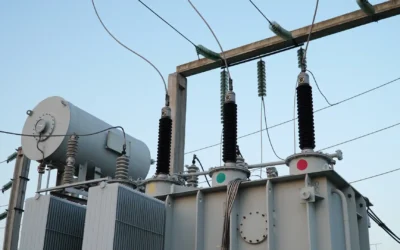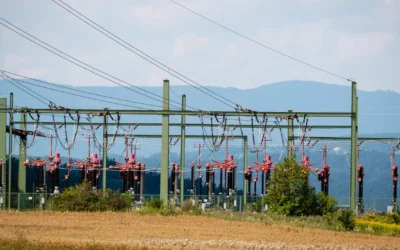• A significant increase in the demand for transformers, including distribution and power transformers, is observed in the global transformer market.
• Due to supply chain issues, the lead time of both the power and distribution transformers has increased substantially.
• Around 2015-2016, the OEMs invested in new manufacturing facilities in order to meet the growing demand, but the demand couldn’t be sustained, and the utilization rate dropped to as low as 40-50%.
A significant increase in the demand for transformers, including distribution and power transformers, is observed in the global transformer market. The transformer OEMs are currently unable to meet the surge in demand, which has not only increased the lead time of transformers but has affected the price of transformers substantially. The surge in the price is a global phenomenon, whereas shortage is more pronounced in North America as compared to Europe, as North America lacks a local supply chain and has placed barriers to large power transformer imports, specifically in the US.
The article explores the demand drivers and other factors in the transformer market, which in turn have led to the increase in the price of transformers and their lead time.
Demand Drivers in the Transformer Market
Globally, the demand for transformers is largely driven by power generation, transmission, and distribution sectors, where there is significant deployment of power and distribution transformers. PTR recently has observed a marked shift in the drivers of demand within the power sector, where renewable energy has emerged as a primary demand driver. This trend is expected to persist as countries push for the integration of renewable energy with the electricity grid. Additionally, the electrification of the transport sector, followed by the installation of electric vehicle charging infrastructure, requires the upgradation of the distribution network, in turn driving demand for the transformers.
In North America, the demand for transformers is driven by the urgent need to upgrade aging power infrastructure to support the growing integration of renewable energy, specifically in the US, where approximately 2.1% of the total transformer fleet is retired each year, as over 70% of the power grid in the country is older than 25 years. The US has plans to increase the share of renewable energy in the generation mix to 80% by 2030. By 2035, the US plans to further increase the share of clean energy in the generation mix to 100%. This ambitious goal requires expansion and upgradation of the electricity grid to enable grid interconnections for new plants coming online, in turn driving growth in the power and distribution transformer market. It is noteworthy that by the end of 2022, projects in excess of 10,200 were seeking grid interconnections across the US, accounting for 1,350 GW of generation and around 680 GW of storage.
In Europe, which is a major transformer market, the demand is driven by increased penetration of renewable energy and electric vehicle charging infrastructure. The European Union has set an ambitious target to increase the share of renewable energy in the energy mix to 45% by 2030, which will require the deployment of around 600 GW of solar PV and 510 GW of wind generation capacity. Furthermore, the EU plans to increase the annual EV sales to at least 55% after 2030. These plans are expected to drive the demand for transformers in the electricity market, including the distribution and power transformers, as utilities push for the deployment of renewable energy, upgrade and expand the T&D infrastructure to enable the integration of clean energy.

Figure 1: Demand Drivers in the Global Transformer Market.
Source: PTR Inc.
Price Variations in the Transformer Market
Currently, the global transformer market is observing shortages and subsequent increases in the prices of transformers, mainly due to increased raw material demand, pandemic-related shortages and backlogs, labor constraints, shipping issues, and geopolitical tensions. Since 2020, a radical increase in the prices of transformers (especially small single-phase pole-mounted transformers) was observed, with per-unit prices surging as high as 100-200%. This is quite surprising as prices in the transformer market have been quite stable historically.
The shortage and subsequent spike in the price of raw materials, especially copper (copper price increased almost 10% in 2023), has contributed significantly in increasing the price of transformers. Another major factor that drove the price of transformers up significantly is the increase in the labor costs of manufacturing due to inflation. PTR expects that the fluctuations and increases in the price of transformers will continue in the short term.

Figure 2: Surge in the Per-Unit Price of Transformers Since 2020.
Source: PTR Inc.
Lead Time of Transformers
Due to supply chain issues, the lead time of both the power and distribution transformers has increased substantially. The lead time of the distribution transformer now ranges between 20 weeks to over a year, depending on whether you are opting for an in-stock or a custom-built unit. In the case of large power transformers, lead time, which was normally 12-14 months (pre-pandemic), has now increased significantly to 38 months. The effect is more pronounced in the US as compared to Europe, which doesn’t have a local supply chain of transformers and has placed import barriers as well for large power transformers.

Figure 3: Lead Time of Distribution and Power Transformers.
Source: PTR Inc.
OEMs’ Perspective
Around 2015-2016, the OEMs (original equipment manufacturers) invested in new manufacturing facilities in order to meet the growing demand due to growth in renewable energy, but the demand couldn’t be sustained, and the utilization rate dropped to as low as 40-50%. At present, transformer OEMs do not see the surge in demand for transformers as sustainable and are reluctant to install new manufacturing facilities; instead, they are adding production lines or increasing shifts at the existing facilities.
Looking Ahead
PTR believes that the regions or countries that do not have a local supply chain of transformers will be more exposed to shortages than those that have an established local supply chain. This is the reason why severe shortages are being observed in the North American transformer market, specifically in the US and not in Europe, where there are local manufacturers. On the other hand, fluctuations and surge in the prices of transformers is a global phenomenon that is expected to persist, at least in the short term (till the demand dies out as expected by the OEMs).
For utilities, the major impediment will not be the price but the shortage and lead time, as they, in any case, will be passing the cost to the consumer one way or the other. To deal with the acute shortages, regions or countries need to move towards localization of the supply chain.
Distribution Transformers Service Overview
The research presented in this article is from PTR's Distribution Transformer service. For information about this service please submit a request shown below.
Contact Sales:
Europe
+49-89-12250950
Americas
+1 408-604-0522
Japan
+81-80-7808-1378
GCC/Rest of APAC
+971-58-1602441
More about our:
Distribution Transformer Market Research
Recent Insights
US Power Transformer Market Snapshot
US Power Transformer Market SnapshotMarket OverviewUSA to expand transmission systems by 60% by 2030 and may need to triple those systems by...
Sustainability Across Sectors: Highlights from GreenTech Festival 2024
Recently, I had the privilege to attend and present at the Greentech Festival, an excellent event in the realm of sustainability. This influential...
Europe Distribution Transformer Market: Navigating Changing Energy Dynamics
Europe's transition to clean energy is driving growth in the distribution transformer market. The growth is fueled by integrating renewable energy...


